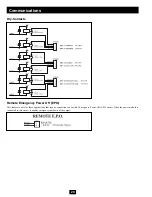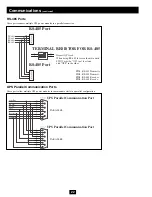
8
Single UPS Operation
The diagrams and procedures in this section apply to a single UPS Power Module connected to a single equipment load. Note: all diagrams assume
the presence of two separate AC sources supplying two separate inputs: a mains source supplying rectifier input and a reserve source supplying
reserve input. If your application only allows a single mains AC source, this source will supply both rectifier and reserve input.
• Operational Modes
•
Shutdown Procedure
• Start-Up Procedure
•
Manual Maintenance Bypass Procedure
Operational Modes
Normal Mode
In this mode, the power module continuously converts AC input power into DC power (to recharge the batteries and supply the inverter). The
inverter, in turn, transforms DC power into clean, stable AC output power for the connected equipment load.
Back-Up Mode
In this mode, utility AC input power has failed. Since the UPS System operates continuously on-line, connected battery modules instantly (with zero transfer
time) supply DC power to the inverter. The inverter, in turn, transforms DC power into clean, stable AC output power for the connected equipment load.
Electrical Connection
(continued)
Parallel Wiring Diagrams
In a parallel connection, up to eight UPS Systems are connected to a single load. A parallel connection provides fail-safe redundancy, assuring that the
load is constantly supported even if one or more UPS Systems fail or are taken off-line for maintenance. Within a parallel architecture, there is a “single
loop” connection option (where only one input source is used) and a “double loop” connection option (where two input sources are used). Note: in both
connection options the total length of all cables (input, output and reserve) must be the same for each UPS Power Module to prevent load inequality.
All Models
• Single Loop Connection (one input source used)
• Double Loop Connection (two input sources used)
LOAD









































